 Palo Alto Stanford Heritage
Palo Alto Stanford Heritage| History | Map | Houses |
The history of College Terrace begins in 1887. In that year, Alexander Gordon, a wealthy farmer and landowner in San Mateo County, bought 120 acres from Peter Spacher and Frederick Weisshaar. Earlier Senator Stanford had tried to buy this tongue of land, which projected into his holdings, but the pair would not sell. Gordon subdivided his land hoping to attract faculty and fraternities to buy it. Construction of Stanford Uiversity buildings was underway and Gordon's acreage was the nearest private property to the university quadrangle.
Gordon called his subdivision Palo Alto. At Senator Stanford's request, though, he renamed the area College Terrace. He also named the streets in alphabetical order after colleges and universities. What is now known as Cornell Street, whose name interrupts the sequence, was originally Washington Street.
Mayfield annexed College Terrace in 1891. Then in 1925, Palo Alto, (previously known as Stanford University Park) annexed Mayfield. At that time Palo Alto renamed all the Mayfield streets that had duplicate street names in Palo Alto.
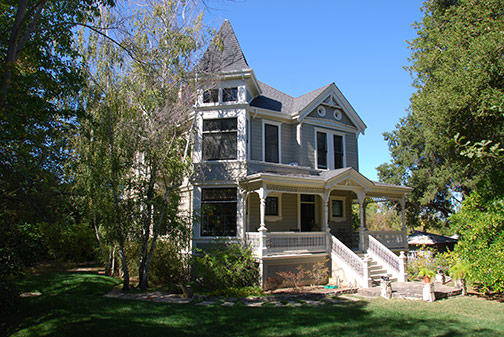
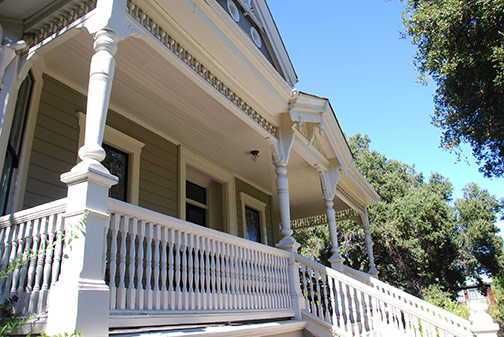
This house displays the exuberance of the Queen Anne style. Characteristics of the style are the spidles at the peak of the side gable, the belt course of scalloped shingles between the first and second floors, the brackets over the bay windows with fan–like carvings and corner pendants, and the angled square corner tower with a pyramidal roof. The house faces what was once an extension of Cambridge Avenue. Walter Miler, a member of Stanford's first faculty, was the initial owner.
2. and 3. 1528 and 1487 College — early 1890s
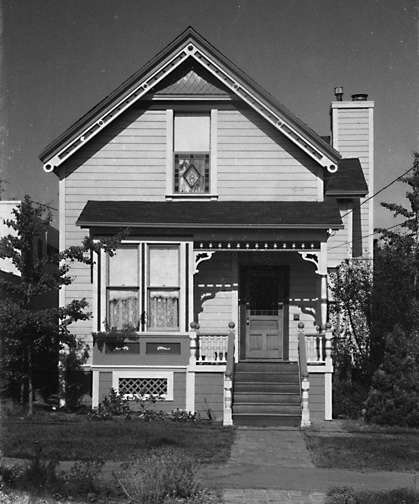
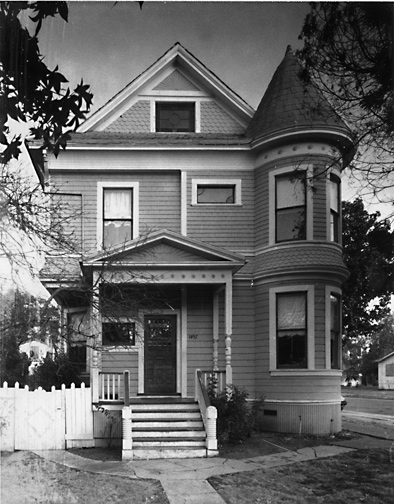
Black and white photos by Robert Brandeis.
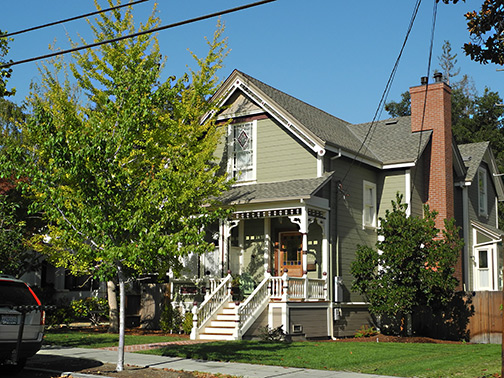
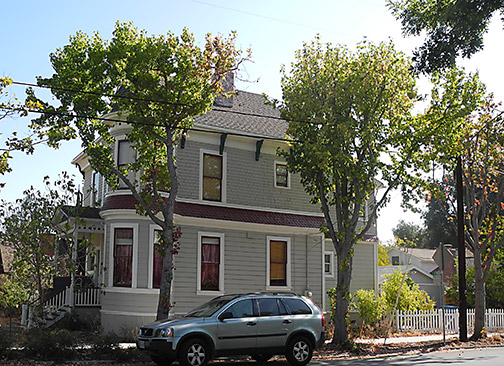
Both houses are examples of the Queen Anne style. As evidenced in the color photo, the fireplace side of 1528 has been changed, but the character of the house has not. See if you can spot the following Queen Anne elements, some of which are used on only one of the houses:
a squared bay
slanted bay
brackets and pendents
a corner tower with a conical roof
carved wood panels
a turned balustrade
fish–scale shingles
cornices with medallions
spindles under porch eaves
a decorated barge board edging a gable.
According to Birge Clark, Alexander Gordon built these houses as models to attract Stanford faculty.
4. 2301–11 Hanover — 1938
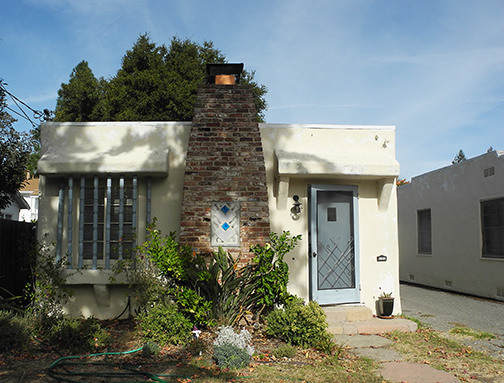 |
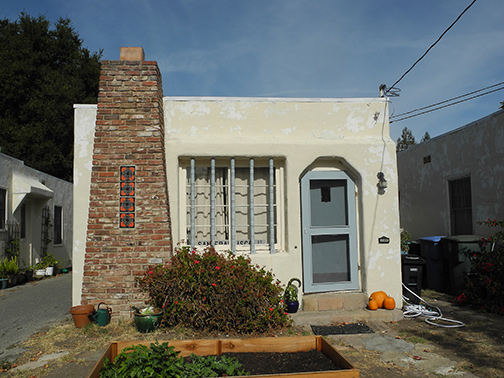 |
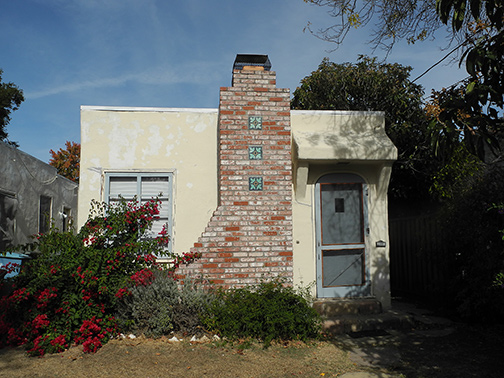 |
| 2301 Hanover | 2305 Hanover | 2311 Hanover |
Pedro de Lemos designed these three cottages in a manner suggestive of the Spanish Colonial Revival style. Note how his skillful hand made these houses special—the stucco window hoods, carved and painted wood window grilles, and the tiled decoration on the chimneys. De Lemos was an artist, craftsman and former curator of the Stanford Museum. He was responsible for many favorite local landmarks, inluding Allied Arts and two Ramona Street buildings.
5. 1181 College — 1903
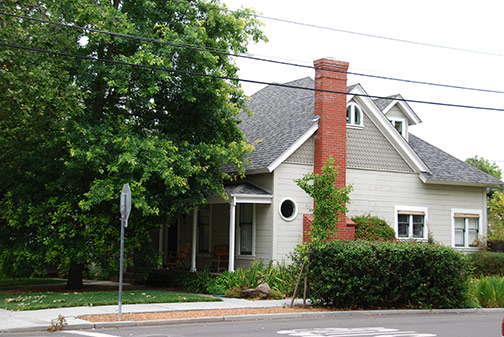
This severely simple cottage typlifies the early, modest dwellings in College Terrace. The only decorative element is the fish–scale shingles at the gables. The large addition at the rear is an excellent example of sensitive new construction. Mae Griffis, a seamstress who rented rooms to Stanford students, owned this cottage for many years.
6. 2051–2081 Harvard — 1930
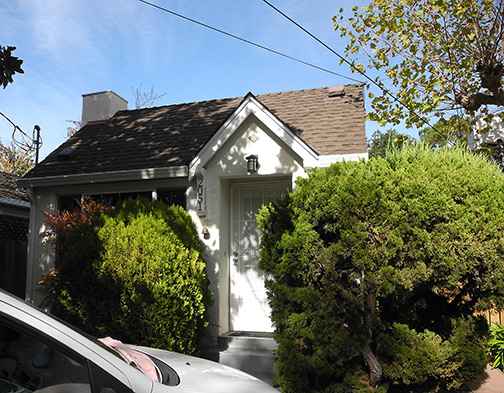 |
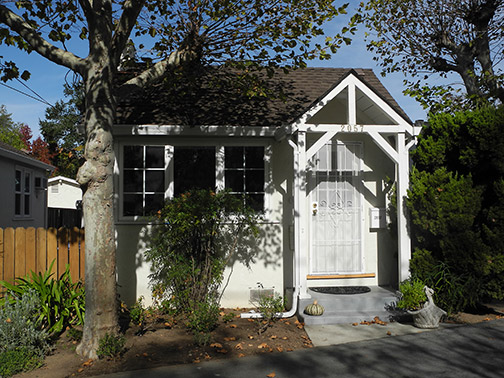 |
| 2051 | 2057 |
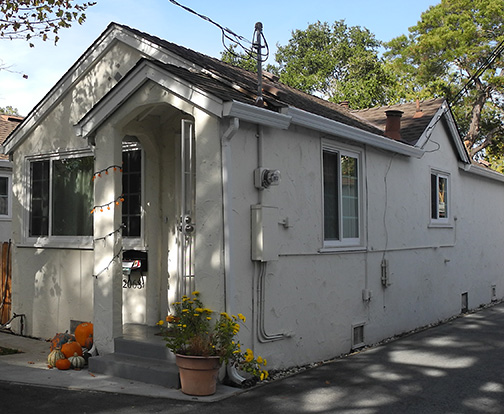 |
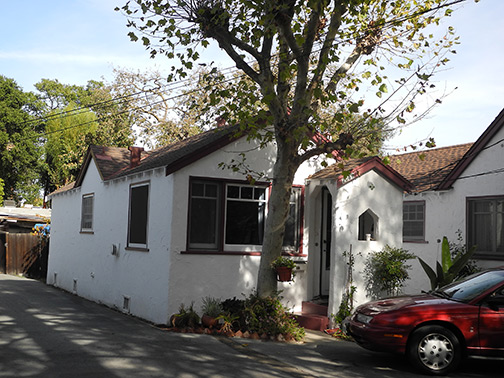 |
| 2063 | 2069 |
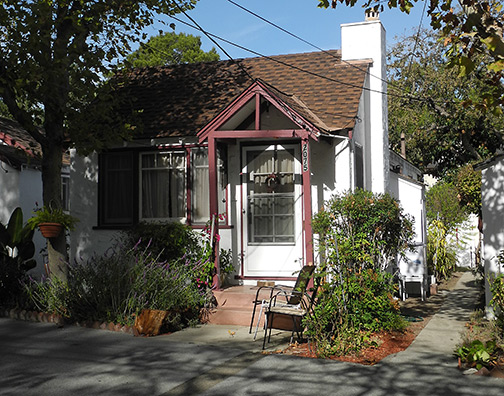 |
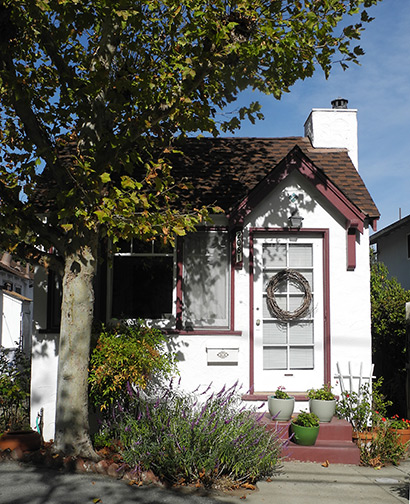 |
| 2075 | 2081 |
These tiny houses are reminiscent of English cottages. Their disposition on a crescent is an exceptional planning device. C. A. Davidson, an instrumental music teacer in Palo Alto from 1921–1954 was the original owner.
7. 1215 and 1229 Stanford — about 1905
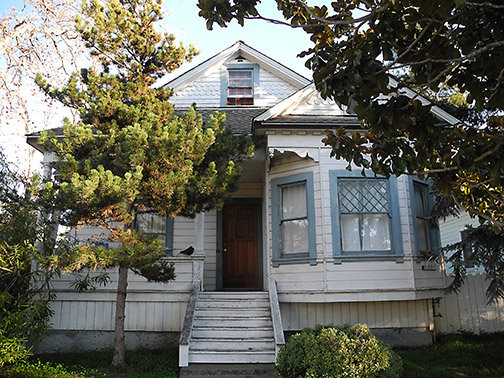 |
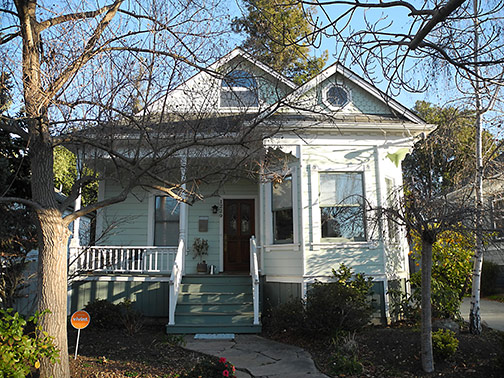 |
| 1215 Stanford | 1229 Stanford |
Exhibiting a restrained, vernacular interpretation of the Queen Anne cottage style, these two houses are almost identical. They display the characteristic elements of porches, bays and decorative shingles.
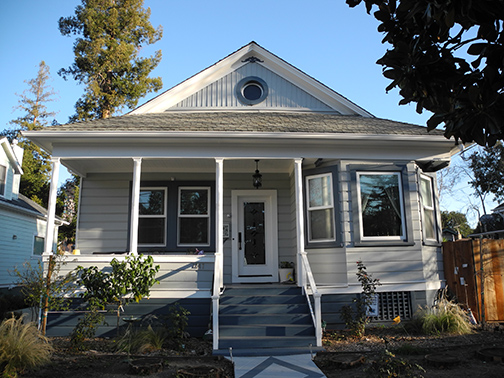 |
| 1247 Stanford |
The house at 1247 Stanford is very similar. At least one of these three was a Stanford Eating Club.
8. 984 California — 1893
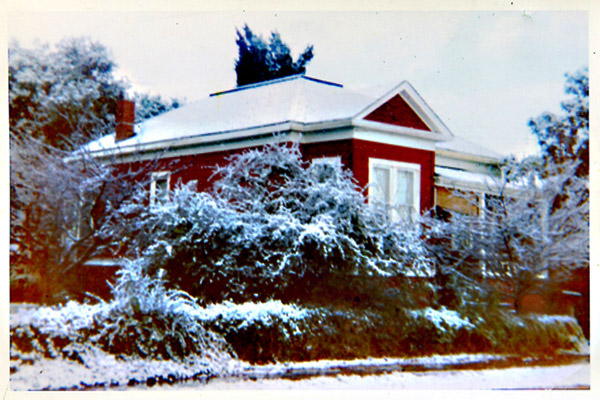
(This photo, taken after a rare snowfall, was provided by a previous resident.)
The detailing on the gable and porch of this house is an example of the late 19th century vernacular style that is prevalent in the area. The main floor is elevated to allow space for a commodious wine cellar below. Angelo Boitano was the original owner of the house. He was a native of Italy and is believed to have lived in Mayfield from the mid–1870s.
9. 2115–2133 Cornell — 1928
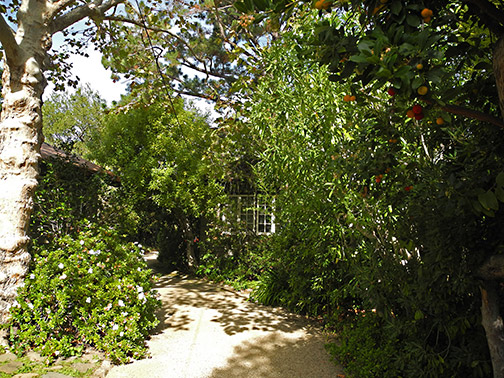
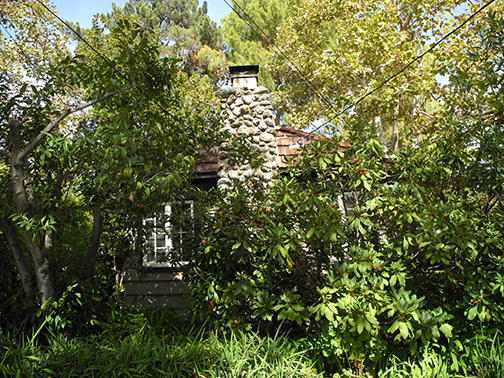
These two identical structures are a classic example of the rustic cottage courts once plentiful in College Terrace. Note the boulder–work chimneys.
10. 2300 Wellesley — Mayfield Park — 1936
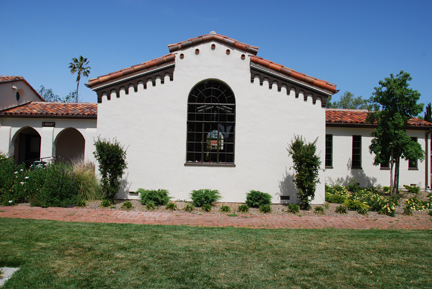
Featuring decorative relief patterns at the entrance loggia, the College Terrace Library is in the California Colonial style. Palo Alto architect Charles Sumner (1874–1948) designed the building and it has played an important role in the life of the area.
11. 610 California — about 1898
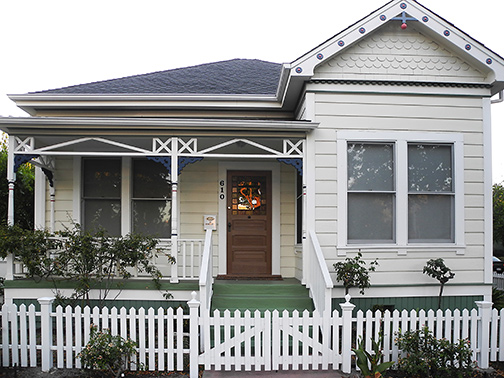
This very early cottage is simple in its main structure but it has handsome front porch detailing.
12. 2310 Yale — 1889
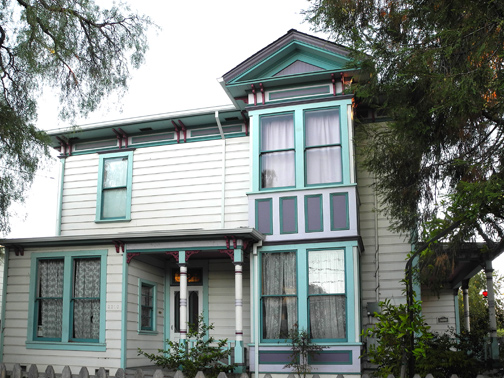
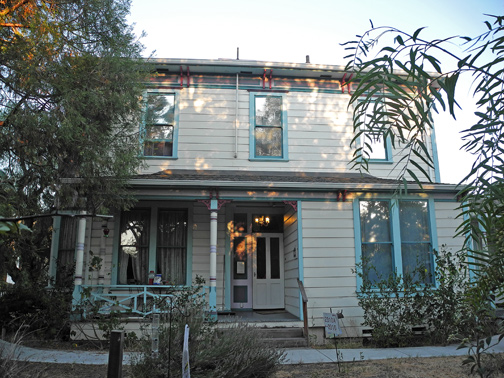
This oldest surviving house in College Terrace has been maintained as it was first built—in a simplified Victorial design. It is listed on the National Register of Historic Places. Today, the main entrance faces Cambridge because originally both Cambridge and Oxford extended through to Amherst. The first owner, Robert Norton Kee, had a transfer buiness in Mayfield.
13. 2290 Yale — 1899
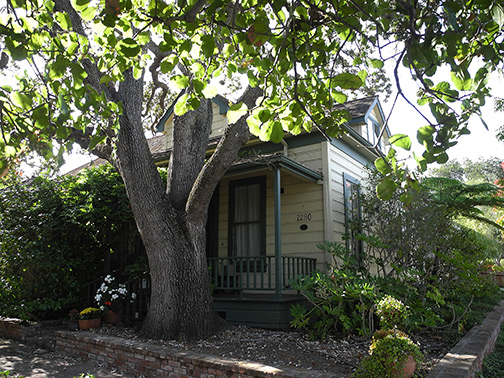
This Stick–style Victorian is a neighbor and contemporary of the Kee house. Peers Park was named after one of its early owners, Alexander Peers.
14. 645 College — (Barn at Rear of 643 College)
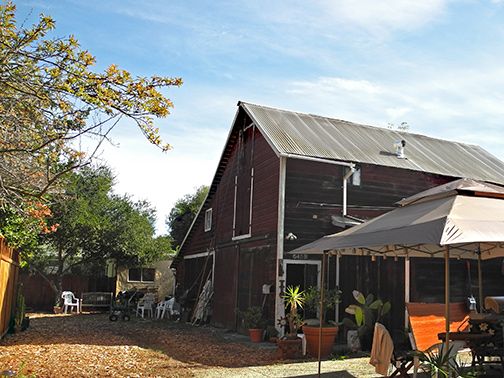
The origins of this unexpected structure from an earlier period are a mystery. It may date to Spacher and Weisshaar, it may belong to one of the four dairies Birge Clark wrote about, or it may be more recent.
15. 2130 Yale — 1904
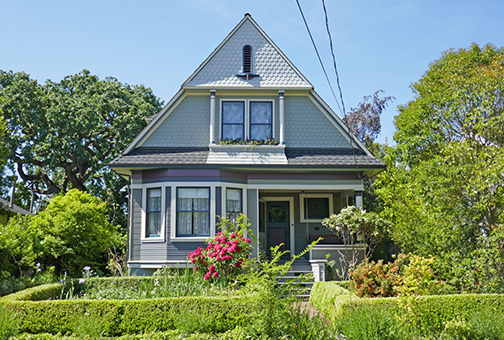
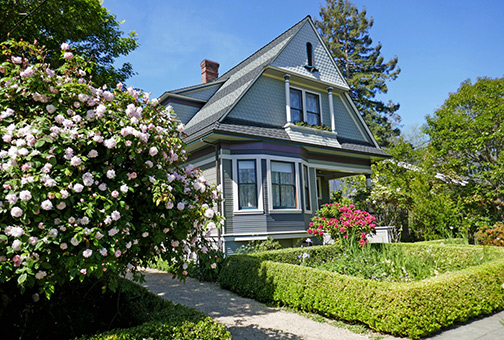
The builder of this house combined Queen Anne and Colonial Revival elements. The patterned shingles and slanted bay are typical of the former and the columns belong to the latter style. Joseph Birkett, an English stonemason who first owned the house, helped build the Stanford quadrangles. His colleagues' wedding present to Joseph and wife, Electa, was an ornately carved sandstone fireplace that still survives. The photos above were taken by Raina Regan of the National Trust in Spring, 2019.
16. 613 Stanford — 1899
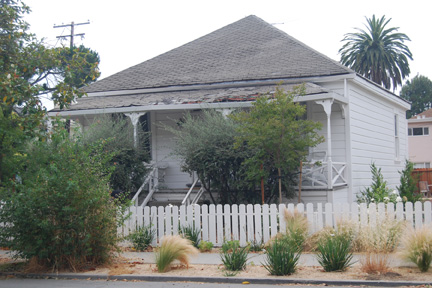
The delicate porch detailing enriches this early cottage with its pyramidal roof. It was build for W. C. and Peter McInnis, a blacksmith and a wagon maker, respectively.
17. 591 Stanford — 1904
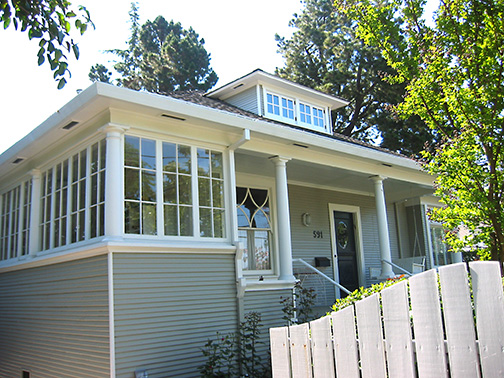
Most of the elements of this house, including the brackets, porch columns and window patterns, are of the Colonial Revival style. The cantilevered square corner bay, though, is a common Mission Revival device. The original owner, Bert Holston, was the Mayfield railroad stationmaster for 40 years.
Text only version — no images (print map separately)
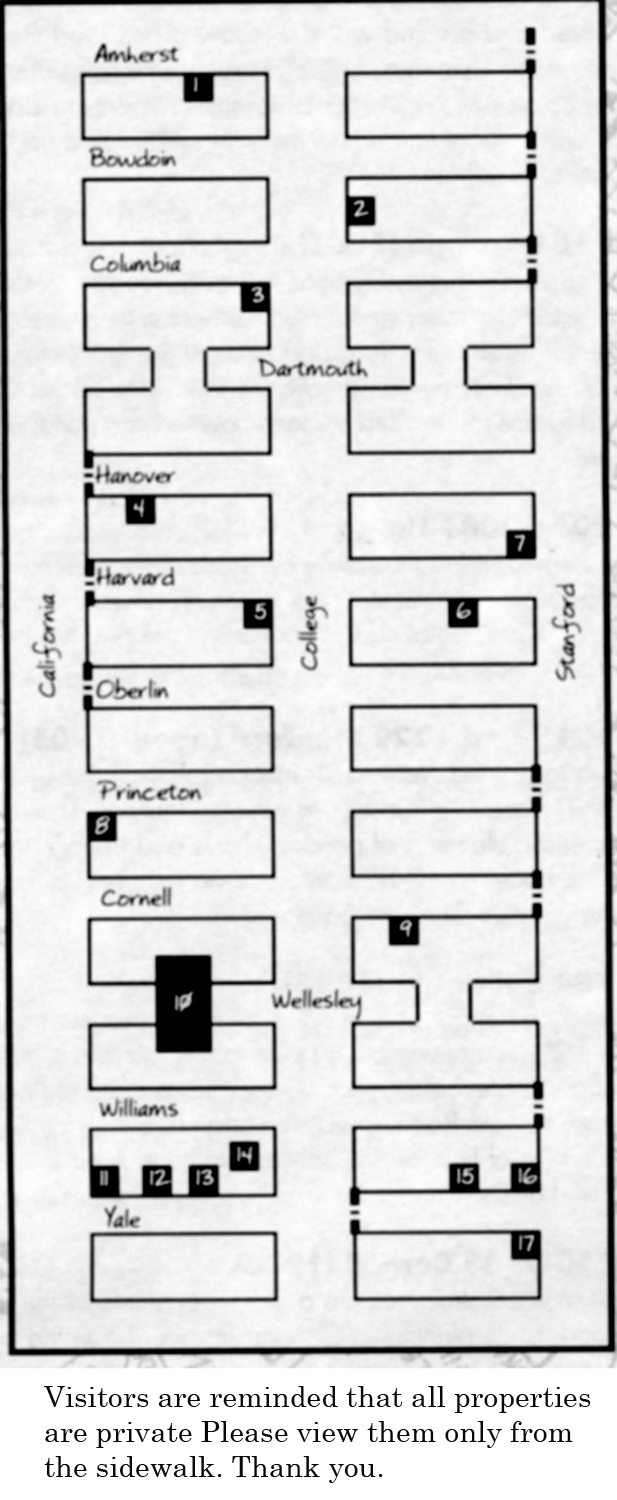
Print (it might take two pieces of paper)
E-mail us at either webmaster@pastheritage.org or president@pastheritage.org.
![]() Palo Alto Stanford Heritage—Dedicated to the preservation of Palo Alto's historic buildings.
Palo Alto Stanford Heritage—Dedicated to the preservation of Palo Alto's historic buildings.
Copyright © 2012 Palo Alto Stanford Heritage. All rights reserved.